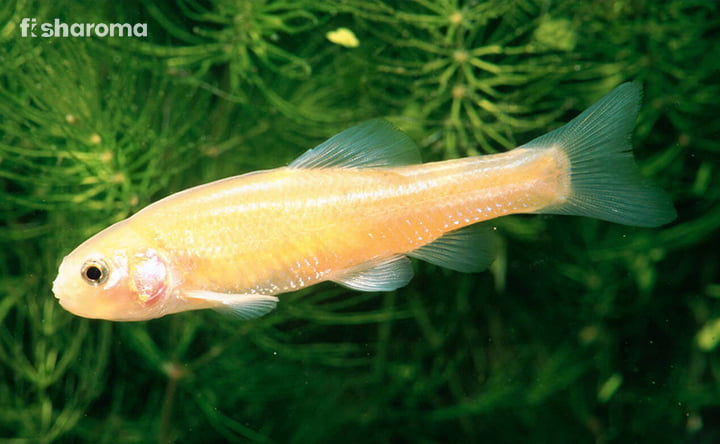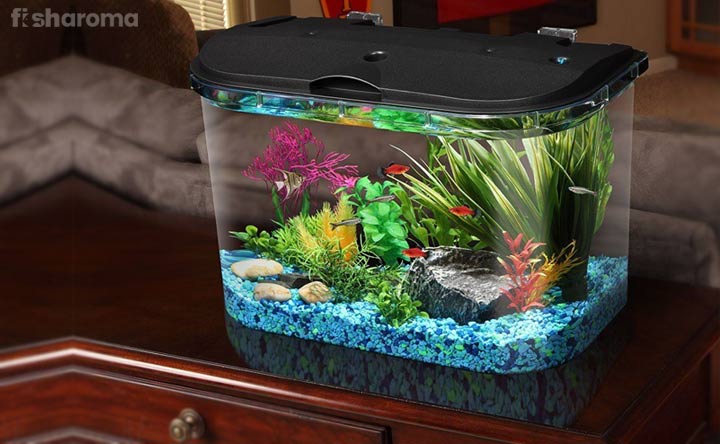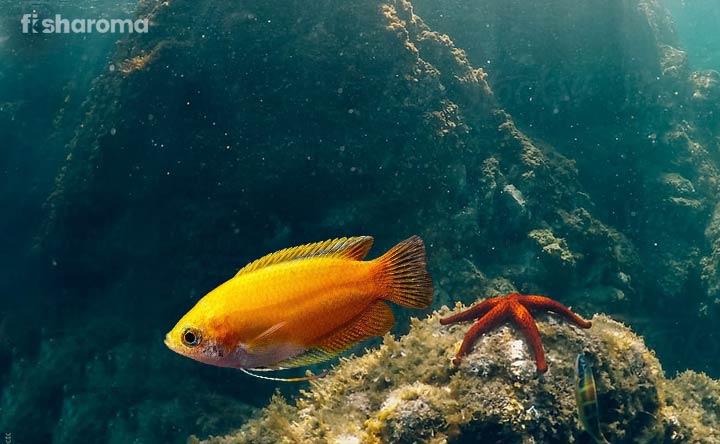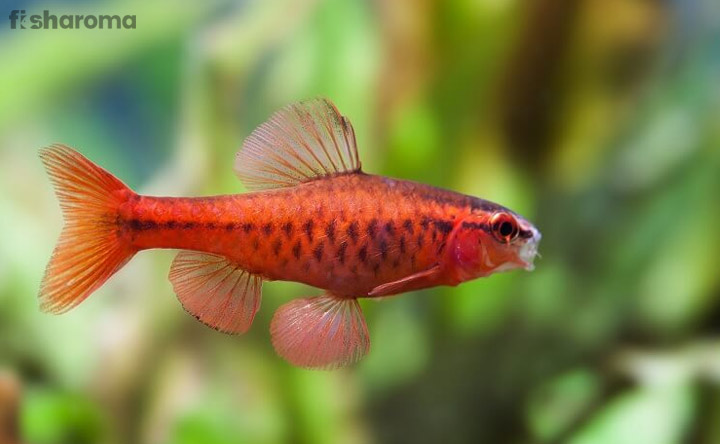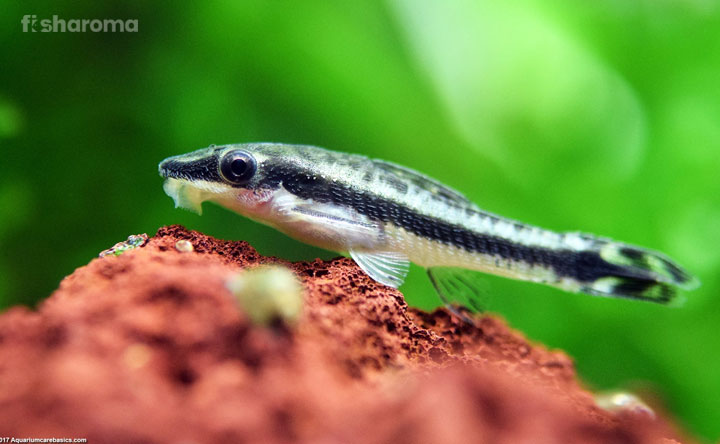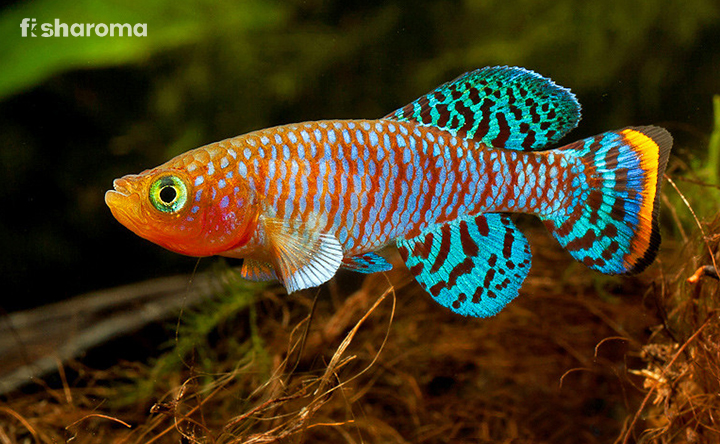A Complete Care Guide to Chinese Algae Eater
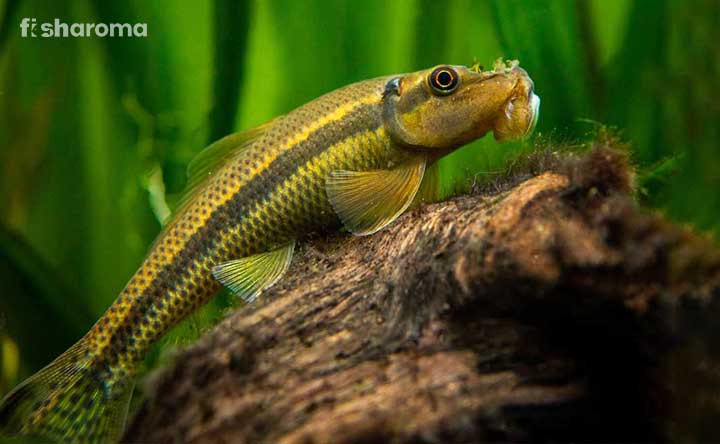
- Origin and Habitat of Chinese Algae Eater
- Appearance of Chinese Algae Eater
- Behaviour of Chinese Algae Eater
- Lifespan of Chinese Algae Eater
- Diet of Chinese Algae Eater
- Tank Requirements for Chinese Algae Eater
- Water Types for Chinese Algae Eater
- Compatibility of Chinese Algae Eater
- Breeding of Chinese Algae Eater
- Disease and Treatment of Chinese Algae Eater
- Summary
The Chinese Algae Eater is a famous species that is most commonly mistaken as entirely different species- namely, False Siamese Algae Eaters and True Siamese Algae Eaters. These fishes come with a mixed reputation where they are believed to be aggressive by some and just peaceful algae eaters by some. Among all the Algae Eaters, this is the best type you can keep in your home aquarium. Being bottom dwellers, they create no problem in tank maintenance. Since algae are very hard to clean, keeping these fish is a great help as they eat away all the algae in your tank. In this care guide, you will find every necessary information to pet your Chinese Algae Eaters.
Key Specifications of Chinese Algae Eater
In this article, we will provide a complete guide to the fish-keepers who are willing to pet Chinese Algae Eaters. Before that, let us peep into a few specifications of the species.
| Scientific Name | Gyrinocheilus aymonieri |
| Origin | Thailand, Laos and Vietnam |
| Lifespan | 10 years |
| Colours | Light brown |
| Temperament | Semi-aggressive |
| Size | 5 inches |
| Diet | Algae |
| Family | Gyrinocheilidae |
| Compatibility | Friendly with smaller fish community |
| Tank Size | 50 gallons |
| Care Level | Easy |
Overview
Chinese Algae Eaters are freshwater fishes and go by a few other names also, like Honey Suckers and Sucking Loache. Their names may deceive you as these are rarely found in China and closely originate from Thailand and Vietnam. The long lifespan of Chinese Algae Eaters will surely enchant your interest in them. Chinese Algae Eaters are available in every store and are very common with a pocket pinch of $3 per fish.
These fishes have an amazing feature in their food habit. At a young age, they feed on algae and remain a tireless tank cleaner for almost 80% of their life. But, as they grow old, they cannot continuously feed on algae and completely fancy live food. If you do not provide live food, they start nipping scales of tank mates.
Origin and Habitat of Chinese Algae Eater
Chinese Algae Eaters are commonly found in mountain streams and lakes of Thailand, Kalimantan Peninsula, Laos and Vietnam. The wild Chinese Algae Eaters are not exported from their natural habitat, rather, the ones grown in hatcheries are used for sale.
These Algae Eaters mainly dwell in fast-flowing streams and tributaries where they can find algae in the rocky bottom. They are very comfortable in sand, gravel and stone substrates and like to spend the majority of time on solid flat surfaces, which implies, you are free to keep them in almost all the available substrates.
Appearance of Chinese Algae Eater
They have a majestic appearance along with an elongated body and small fins. With an inferior sucker mouth and pronounced lips, these fishes cling to the sand surface when the water current becomes high.
Though they appear almost similar to a few other bottom dwellers, they have a specialized organ, called branchial apertures, that help to put water forcefully on their gills for smooth respiration.
Size of Chinese Algae Eater
These fishes are generally 5 inches in size when kept in an aquarium but most of the time they can even reach up to 11 inches in the natural habitat. This happens to wild Chinese Algae Eaters owing to small space in home aquariums.
Colour of Chinese Algae Eater
These fishes look charismatic but are not brightly coloured. They have a pale brown body with dark stripes along the sides that end up in a line of spots.
Behaviour of Chinese Algae Eater
Though this species likes to live alone, still, they don’t mind sharing their space with small fishes. When kept alone, they keep by themselves and do not create any trouble.
They do not like fish of the same size and being bottom dwellers, they cannot stay with any other deep-water fish. More likely, they are intolerant to their own species and even if you keep the same species in one tank, they will end up in territorial bully.
These fishes like fast-flowing water where there is the formation of a high amount of algae. It cannot be said whether they are shy or upfront in behaviour as they behave differently in different conditions.
Lifespan of Chinese Algae Eater
The lifespan of Chinese Algae Eaters is typically 10 years and in their whole lifespan, they remain your best pet. However, their years of living is generally dependent on the type of space, care, nutrition and water.
Diet of Chinese Algae Eater
Since these fishes feed on algae, they prefer to stay at bottom of the water bodies. Wild Chinese Algae Eaters rasp on sands and rocks to scrape off algae through their sucker mouth. However, they do not feed on algae only and while dwelling in rocky tributaries, they feed on maggots, which provide them huge protein.
In home-aquarium, sometimes you must change their diet from algae to wafers. But this change of food should be conducted only when they are not eating many algae.
The interesting feature in these fishes is their change of diet according to their age. As they grow older, they need live and frozen food, since the constant search for algae underwater, becomes tiresome. You should give them bloodworms, daphnia, brine shrimps or insect larvae.
Remember, you must keep an eye on them because if they do not eat many algae at a younger age also, you need to change their diet.
Tank Requirements for Chinese Algae Eater
These are mainly wild fishes, but still, to maintain them in captivity you must maintain the required tank conditions and regularly follow our guide.
Tank Size
For juvenile Chinese Algae Eaters, you are free to keep them in a 30-gallon tank but for a proper adult fish, you need a minimum of 50-gallon tank. This provides them with freedom, less stress and ensures they find enough algae to eat upon. You can keep a group of 5 fish in one tank so that they can be free to communicate and create a boundary among them. But, for these, you need a minimum of a 52-gallon tank.
Tank Lid
Along with keeping away dirt and dust, a sturdy tank lid will resist the fish to jump out of the tank. These fishes have a solid powerful sucker mouth with the help of which they try to escape by opening the tank lid, so keep the lid tight.
Substrate
These fishes dwell in all types of substrates like sand, gravel, rock and pebbles because algae mostly form there. But you must choose smooth flat rocks so that they can collect aquarium algae; and at the same time, smooth rocks, without sharp edge, will not be harmful. As Chinese Algae Eaters latch on a smooth surface to clean them, keep round stones at the bottom so that it becomes convenient for the fish to scrape algae.
Filter
These fishes like fast-flowing water as more algae is produced in high currents. You must keep the filter level high so that it generates high water movement for them. Recreate fast water flow by fixing a good pump and direct all the outlets towards the corner and side of the tank. This will continuously generate water circulation. Since this fish likes oxygen-rich clean water, keep a canister filter in the tank.
Ornaments
Decorate the tank with different decor materials like plants, lights and substrates so that the fishes feel at home. Keep enough rock caves and driftwoods for them to play and hide.
Presence of Flora
As these fishes originate from peninsula and tributaries, they like vegetation, plants and grass in their locality. You must keep ample greenery in their tank along with the plants that generate more algae. Do not worry, they eat vegetation does not mean they will eat away your fancy plants. Recommended plants for producing algae are:
- Hornwort
- Wisteria
- Teardrop Rotala
Lightning
Good lighting makes good algae, as well, these fishes like bright lights. But you can use standard lights because they spent most of their time at the bottom of the water. Remember not to keep the tank in direct sunlight as this drafts high power, which is not good for these fishes.
Cleaning Method
You need to use a strong filtration and high-powered pump to keep the tank clean. These fishes are very sensitive to alkali and hence, you need to keep away any kind of mineral from them.
Use a soft cloth for cleaning the walls of the tank, both inside and outside. You must not clean the substrates, because the algae produced on them is the main diet of Chinese Algae Eaters.
Water Types for Chinese Algae Eater
The water type for these fishes is to be maintained with great care. For this, you must follow the following parameters.
Temperature
We have already mentioned that these fishes like warm water for which, you must keep the water temperature between 22-25 Degrees Celsius. It is better to keep a heater inside the tank as this can help to maintain the required water temperature.
pH Level
The pH level for their water must be 5.8-8.0.
Hardness
The general hardness of the water needs to be between 3 to 12 dGH and the carbonate hardness must be 8-12 dKH.
Minerals
These freshwater fishes are very sensitive to nitrates and ammonia so avoid mineral dilution in their dwelling zone.
Replacement procedure
Do not change the whole water at one go. You must change 10% of water in a week or 50% of water in a fortnight. Adjust the filtration system after changing the water. During the whole water replacement procedure, keep the fish in a bowl with the same water temperature. Choose either of the two processes.
Compatibility of Chinese Algae Eater
These fishes cannot stay with the same size fish as they become territorial when other fishes come into their tank. If you want to keep a group of same species, keep five of them in a tank as it helps them to create their own boundary.
However, they become aggressive when they find themselves with other bottom dwellers.
Suitable Tank Mates
They are fine with the same species and sometimes other small fishes.
- Molly Fish
- Platies
- Zebra Danios
- Emperor Tetra
- Dwarf Gourami
- Tiger Barbs
Unsuitable Tank Mates
They cannot stay with fishes of their own size and other bottom dwellers. A few fish-keepers might think keeping Chinese Algae Eaters with other algae eaters will be interesting, because all of them will clean the tank more often. But this is not a very good idea because Chinese Algae Eaters will turn aggressive in other algae eaters’ company. They are not comfortable with these fishes:
- Amano Shrimp
- Nerite Snails
- Cherry Shrimp
- Florida Flagfish
- Siamese Algae Eater
Breeding of Chinese Algae Eater
Very few cases of breeding are successful in the home tanks, as this species cannot be bred in the home aquarium. Since most of these fish come from hatcheries, they have a hormonal agent. Moreover, making them mate is difficult also, because the females are fatter and the males grow horn during mating, which makes females uncomfortable.
But the process is not impossible and you should at least try it by providing ample vegetation and plants to them. They need extra space and deep water to remain stress-free before mating.
You must keep a few males and females together in one tank, but this is quite challenging because both males and females are identical. If you have a pair of opposite gender, then you can try to make them breed by raising the temperature up to 80 Degrees Celsius to provide them with warmth. Also, provide them with a high protein diet before you plan to put them together for mating.
Disease and Treatment of Chinese Algae Eater
This species is not disease-specific, however, they can catch some common freshwater fish diseases. The most common and prevalent is Ich or white spot disease, which generally develops in their belly. Quarantine them and contact a veterinarian so that they do not spread the disease.
Summary
These fishes need very little care as they can grow on their own. You do not have to worry about their diet as they completely depend upon algae. However, beginners need to keep only one fish in a tank. They are semi-aggressive, but if disturbed in the territory, their aggression is hard to tackle. So please make sure that you provide them with ample freedom and commit yourself to their care.
Care guide for similar freshwater fish
If this article is good enough for you to satisfy your demands, reach out for our remaining articles.
- Care guide for Datnoid: These popular freshwater fish is a good choice for you. Keep yourself updated with more such guides.
- Care guide for Arowana: Arowana or Dragonfish! These shinning beauties will add glamour to your freshwater tank.
- Care guidance to Breed Betta Fish: Betta Fish are absolute beauty while they fight. Know more from our sites.



